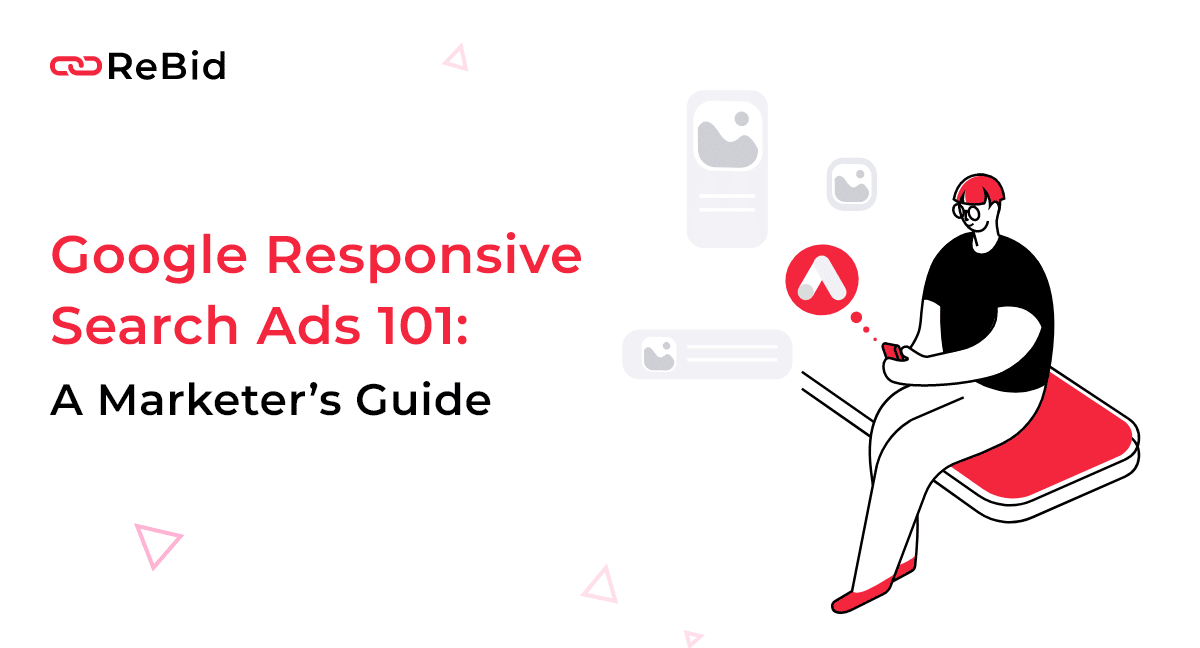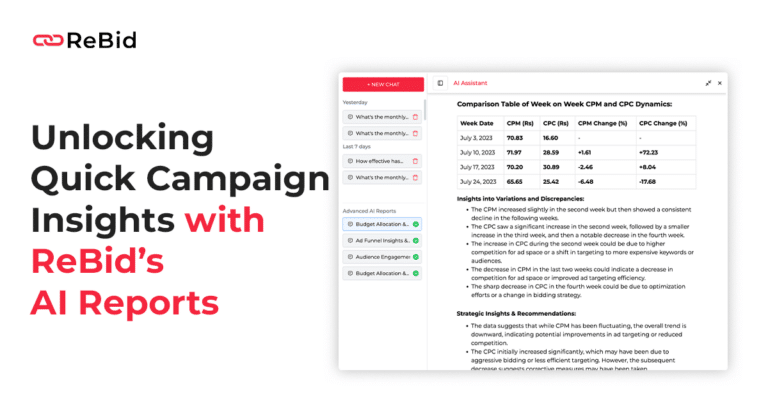Traditional Google ads require a lot of manual interventions. Yet, organizations spend considerable time and money on them simply because they work! Every dollar brands spend on Google ads gets them an $8 profit. According to Google, this is a conservative estimate, and some businesses can and do earn much more. Your business can achieve way more ROAS with a little effort on Google Responsive Search Ads.
We bring you the ultimate Google Responsive Search Ads 101 guide, so read on and become a Google Responsive Search Ads expert.
Google Responsive Search Ads 101: what are they?
Google Responsive Search Ads are an efficient way of ad testing. You can feed up to fifteen headlines into the tool and four descriptions. Google then creates permutations of these (around 40,000 combinations), which it can test to understand which ones perform the best.
Once Google starts testing these ad permutations, it will push the one that performs the best or use different versions for different segments based on targeted audience analysis.
You created just under 40,000 variations of an ad with minimal effort with Google Response Search Ads. And even before you go live with them, you know which ones have the highest chance of performing. What’s not to love?
You are not manually creating these forty thousand versions. Instead, your input is still the same – the fifteen headlines and four descriptions.
Google Responsive Search Ads 101: The vital benefits
Responsive search ads are an excellent implementation of automation. And you are no longer outsourcing the creative process. Instead, it is the quality of your headlines and descriptions that determine your ad’s success.
You are simply automating what would have been a manual creation of different versions. Lisa Dietrich, the co-founder of RemoteCanteen, found that after her organization adopted responsive search ads, she had more time to focus on other aspects of the campaign. Since they are so easy to manage, she finds them more effective than traditional ads.
Moreover, these responsive search ads can be integrated with a wide range of integrations and tools, making them more likely to perform well across SERPs.
Some specific benefits of responsive search ads include:
- Ad hyper-personalization
Google is creating tens of thousands of versions of the ad. It puts the version of the ad in front of a consumer that is the most in consonance with their search history, device type, location, etc. With the right marketing automation and tracking tool, the entire process of putting the right ad in front of the right person at the right time gets outsourced.
- Automated and enhanced A/B testing
When Google puts out those 40,000 variations of a single ad, it is essentially enabling A/B testing for you. Ad testing and analysis based on such a comprehensive sample of ads will be invaluable to your ROAS.
- Device optimization
With so many options available to run Google Responsive Search Ads, you have the option of adding a few short headlines to the mix of inputs. So your smaller ads will be ideal for audiences seeing them on their mobile and tablet screens.
But how do these benefits translate to hard dollar ROAS? Krittin Kalra, the founder of WriteCream, found that in the first three months of using responsive search ads, their conversion rate went from 3% to 6%. Her brand also saw a significant increase in sales from Google ads and found that customers now had enhanced brand recall. For Lisa Dietrich and RemoteCanteen, responsive search ads have boosted click-through rates by up to 50%.
Want to achieve these numbers without spending too much time and effort? ReBid Buy will help you hit them – try it now.
These whopping results demonstrate that responsive search ads can significantly impact CTR, traffic, conversions, and, ultimately, sales. As a result, all parts of the funnel benefit from Google Responsive Search Ads.
Google Responsive Search Ads and Dynamic Search Ads – what’s the difference?
But before you jump on the responsive search ad bandwagon, it is vital to distinguish them from dynamic search ads. With dynamic search ads, Google creates headlines for an ad depending on the search query or content. It directly takes over the creative process.
Organizations use dynamic ads when they need keyword-based content for ads.
Responsive search ads are more about numbers and creating as many ad versions as possible from a group of headlines and descriptions. Eventually, it is about ensuring that the ad you do take live comes with some certainty of performing well and helping you meet your ROAS goals.
Best practices for Google Responsive Search Ads
Are you thinking of getting started with Google Responsive Search Ads? Become an expert with these tried and tested best practices.
Best practice 1 – Play around with tone of voice
You can deliver the same ad intent in a range of tones. Experiment with 2-3 versions that vary in tonality depending on your brand value or your specific audience segment’s affinities.
Diverse tones of voice in your sample ads can help you determine which one your audience resonates with the most.
Best practice 2 – Try out different lengths in headers and descriptions
These ads will land on all kinds of devices. So, include varying lengths of headers and descriptions. The intent and words need not change. Just play around with the sentence structure to cater to different screens. Discovering shorter ways to communicate the same key messages is a worthwhile creative exercise.
Best practice 3 – Include one keyword in each header
Since Google will be testing different iterations of your headers and descriptions, you can include a single primary keyword in each. That way, you will know which keyword performs and which doesn’t.
Best practice 4 – Make ads that focus on a single, clear benefit
You have fifteen headlines to work with, so make each of them about one benefit of your product or service. Then, when Google tests these ads, you can gauge which benefit leads to the most clicks. This way, you can ensure that your target audience gets the feature messaging that will resonate with them. Subsequently, this will result in higher ROAS.
Best practice 5 – Avoid the top two Google Response Search Ad mistakes
Krittin of WriteCream highlights a common mistake that brands make while using responsive ads. Despite responsive ads being easy to manage and optimize, you need to give them time to generate results. According to him, brands should provide a new lot of ads at least a month before deciding whether they are worth continuing.
Krittin notes that brands make another mistake in digital media buying reports and ads: they do not track the costs associated with the campaign. While this may be a mistake in general, it gets exacerbated with Google Responsive Search Ads. Because the quantum of ads generated for testing is higher, it gets more challenging to track costs. Monitoring the campaign and its costs throughout the process is critical to staying within your ad budget.
Millions of ads but a single platform: ReBid Buy
ReBid Buy does all the heavy lifting when you are testing so many ads. With a customized dashboard that tracks your campaigns in one single interface, you can analyze the KPIs across all the ad variations, along with the costs and other parameters.
We will help you optimize and nail high ROAS thresholds through unified digital media buying and planning to support all your ads. So all you have to do is focus on the creative brainstorms. Let Google and ReBid Buy do the rest.




